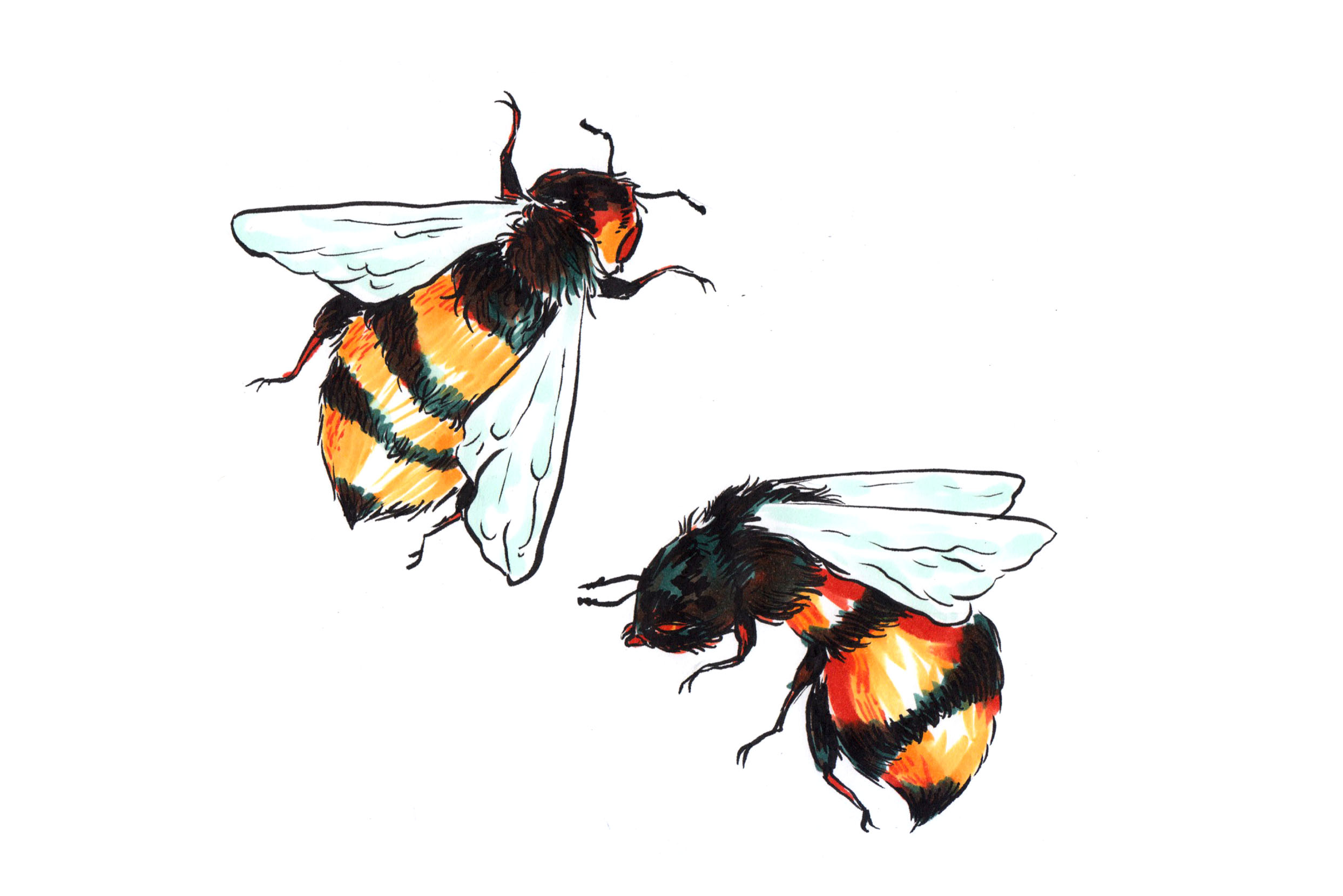“Believe it or not, you have a bee to thank for every one in three bites of food you eat,” wrote Greenpeace.
Honeybees are responsible for 80 percent of the world’s pollination, including many staple foods. Their strenuous pollination efforts account for 90 percent of the human food supply, making honeybees essential for life on Earth to survive.
Without bees, Earth could not sustain our current standard of living. “Pollination is essentially plant reproduction” said One Green Planet, a forum dedicated to providing eco-conscious information to the public.
In the transfer of pollen, bees sustain much of the biodiversity necessary to maintain our ecosystem. Without pollination, millions of plant species wouldn’t exist. As more bees die, more plants die. When plants die, there goes the world’s food supply, then go humans.
A study funded by the USDA assessed around 2 million bee colonies and found there was a 60 percent reduction in bee colonies from 1947 to 2008. This phenomenon is now referred to as Colony Collapse Disorder. Greenpeace reported that a honeybee colony typically only loses 10 percent of bees during the winter, and losses closer to 30 to 50 percent can likely be blamed on humans.
There are two main reasons why bee colonies are collapsing: pesticides and habitat loss.
Our destructive and invasive attitude toward the environment is the root of the habitat loss problem. We need to be concerned about how our human developments affect the environment that sustains us instead of get rich quick schemes.
Companies that profit from genetically modified organisms – like Monsanto – perpetuate this attitude. Obama’s signing of the Monsanto Protection Act ensures Monsanto isn’t liable for any damages its products cause people or the environment. As these companies continue to reap rewards through their environmental destruction, the Earth’s lifespan dwindles.
Large pesticide production companies like Monsanto present their pesticide use as beneficial for bees, with the intention being to kill “a mite that is believed to be at least partly responsible for the mass die-offs of honeybees in recent years,” wrote the New York Times. However, their research doesn’t cover the possible effects that pesticide use could have on the environment overall.
When companies like Monsanto fund the research for their own products, it’s easy to see how the results could end up biased in their favor. Contrary to what Monsanto would like people to believe, the use of pesticides does not solve CCD, but exacerbates it.
While there are seven common pesticides deadly to honeybees, one of the worst is known as neonicotinoid. Not only does this pesticide harm bees, it also harms butterflies and birds, which are also essential to maintaining a functioning ecosystem.
In 2013, multiple European countries banned this pesticide because their instances of CCD were higher than the US.
Instead of focusing on short-term profits with GMO monocrops and pesticides, Europe has focused on creating a sustainable food supply without the need for pesticides. The U.S. should learn from the way Europe is handling CCD and pesticide use, because we will soon be in the same situation and the root of the problem resides in our country.
Oregon is not exempt from CCD and according to the Oregonian, since 2013 the state has had some of worst mass bee deaths in history. The USDA, EPA and Portland Council placed some bans on pesticide use, but it isn’t enough. We need a restructuring of how we view the balance between our urban lifestyle and how we treat the environment.
Ecological, organic agriculture, where we work with the bees instead of killing them, is a good start. Every species has a place on Earth for a reason and the more humans try to control their development, the more unstable the ecosystem of the future becomes.
Fortunately there are small ways you can help. First, don’t confuse wasps with bees. Much intended pesticide use for wasps actually transfers to honeybees. A Pennsylvania Native Bee Survey Citizen Scientist Pollinator Monitoring Guide outlines the main differences to remember.
Wasps have smaller, narrower bodies than bees and don’t have noticeable hair. Also, wasps have much longer legs and have brighter colors on the outer bodies. And most importantly, wasps never carry pollen.
While wasps go out of their way to cause a nuisance, the presence of honeybees is nothing to fear, as they are just doing their jobs and typically don’t sting unless provoked.
Second, stop using pesticides to kill pesky wasps and use natural alternatives. Natural pesticides are not only better for your health, but also for all plant and insect life.
According to ABC News, 2015 spelled out the worst wasp plague in over two decades for Australia but they aren’t immediately running to pesticides.
A Melbourne-based blog suggests two easy solutions using household products: peppermint flavored spray (mixing peppermint with water in a spray bottle) and a beer trap (pouring beer into a cut open water bottle and letting wasps drown). Learn to live with honeybees instead of fear them because without them, humans won’t survive.
Lastly, report illegal pesticide use and honeybee killing to the EPA at http://www.epa.gov/pollinator-protection/report-bee-kills.
We can help save the bees and our planet – but only if we are willing to make the effort.






